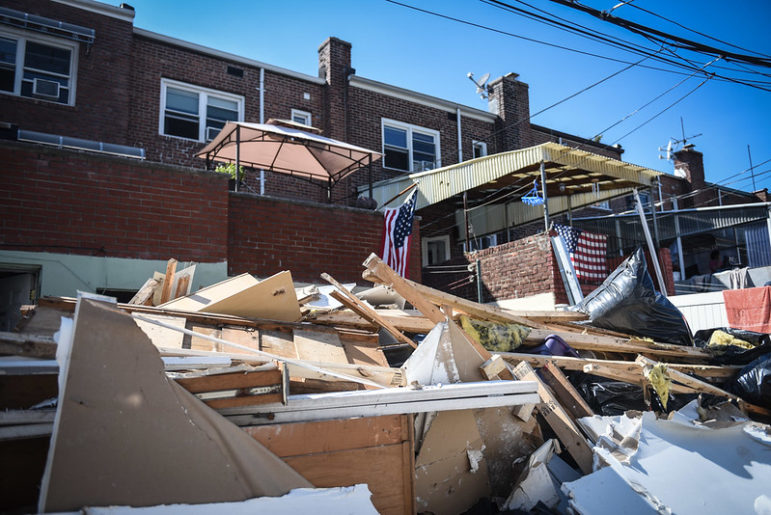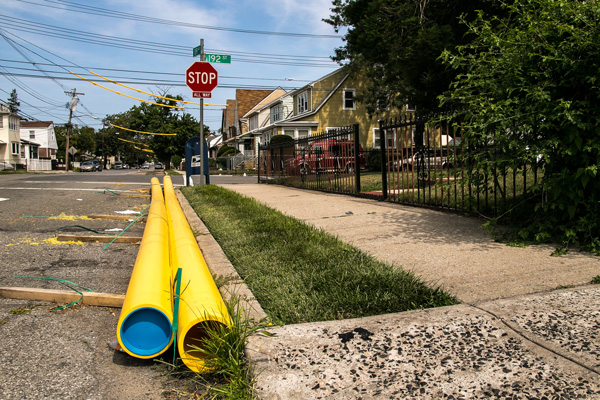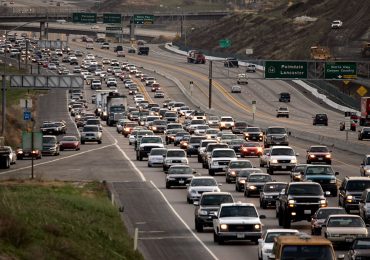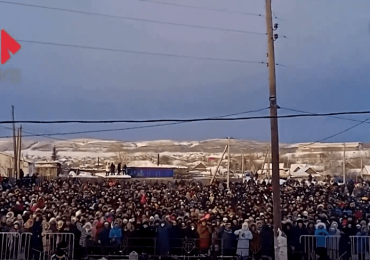The Ida relief fund for “excluded” New Yorkers was set up by the city and state for people who suffered damages from the historic flooding but didn’t qualify for aid administered by FEMA because of their immigration status. But a year later, just a fraction of the funding has been used, and only 330 out of 554 have received a cash payout.

Michael Appleton/Mayoral Photography Office
Ida aftermath in Queens.
Vicente Guerrero, 40, finds it hard to believe that a year has already passed.
“It can’t be a year since the flooding,” Guerrero said by phone on Sept. 1, the one-year anniversary of the day the remnants of Hurricane Ida passed through New York, washing away everything in his three-bedroom basement apartment in Flushing, Queens.
After losing his belongings, Guerrero slept on the couch of a friend in Manhattan—a fellow food delivery worker like himself—for more than four months, until he finally found a room in a three-bedroom apartment in Queens that he could afford, and that was not in a basement.
Guerrero’s home was one of 11,000 damaged by floods from Hurricane Ida, according to Gov. Kathy Hochul’s office. As the one-year anniversary of the storm passed this week, many of those impacted continue on a slow recovery: homeowners who filed a negligence claim against the city are getting denied, and more than 100 displaced people who were placed in hotels are still in them.
And while 41,367 households across New York state were approved for $223.3 million in disaster assistance from the Federal Emergency Management Agency (FEMA), another Ida relief fund established by the city and state to help undocumented storm victims has been less impactful.
The Ida relief fund for “excluded” New Yorkers was set up by the city and state for people who suffered damages from the historic flooding but didn’t qualify for aid administered by FEMA because of their immigration status. But a year later, after extending the application period several times, just a fraction of the funding has been used. The program closed to new applicants definitively on April 29.
According to New York’s Department of State, out of 554 applicants, 373 were approved for aid and 330 have received a cash payout to cover what they lost. In total, just under $2 million—or $1,901,034—of the $27 million allocated for the program has been used and distributed to storm victims as of Sept. 1.
Advocates point to several reasons for the lackluster participation numbers. The relief fund was announced by city and state officials on Sept. 26, more than 20 days after the storm hit New York, when some victims would likely have already moved out of damaged residences without documenting the losses they’d suffered.
The six community-based organizations (CBOs) charged with reviewing applications and administering the funds have explained that there are multiple checks to go through before an applicant can access funding, and relies largely on a victim’s ability to gather evidence of damages.
That was one of the reasons Guerrero said he never applied for the fund: Along with a general distrust of government programs, he anticipated it would be difficult for him to substantiate what he spent related to his displacement since he was more focused on surviving in the immediate aftermath of the storm, rather than documenting every step of his loss, he said.
Those who applied and were approved could receive a maximum of $72,000, including up to $36,000 in grants for housing-related assistance and up to $36,000 in assistance for other needs, like vehicle damage, moving expenses, and childcare. So far, 34 percent of the dispersed aid went to direct housing-related assistance, while the majority was for the “other needs assistance” category.
Since May, when the fund closed for good, 42 new applicants received a reimbursement. It’s unlikely that the 43 applicants still pending will receive the maximum aid amount, and even if that happens, there would still be several millions left unused from the $27 million allocated for the program.
The New York Department of State has so far declined to say what will happen to the leftover money, which some advocates want used to establish a permanent fund for future undocumented storm victims.
“It is too early to determine how much of the overall funds will be awarded as the process continues. This is a reimbursement-based system and money continues to be disbursed,” spokesperson Mercedes Padilla said. She explained that to make things more agile, the partnering CBOs received an upfront disbursement for an undisclosed portion of the fund, plus money to cover administrative costs.
“Advances were given to Community Organizations to support expenditures associated with administrative costs and to get immediate assistance to those impacted,” Padilla said. “Any funds not utilized for the program will be recouped.”
Leave a comment








